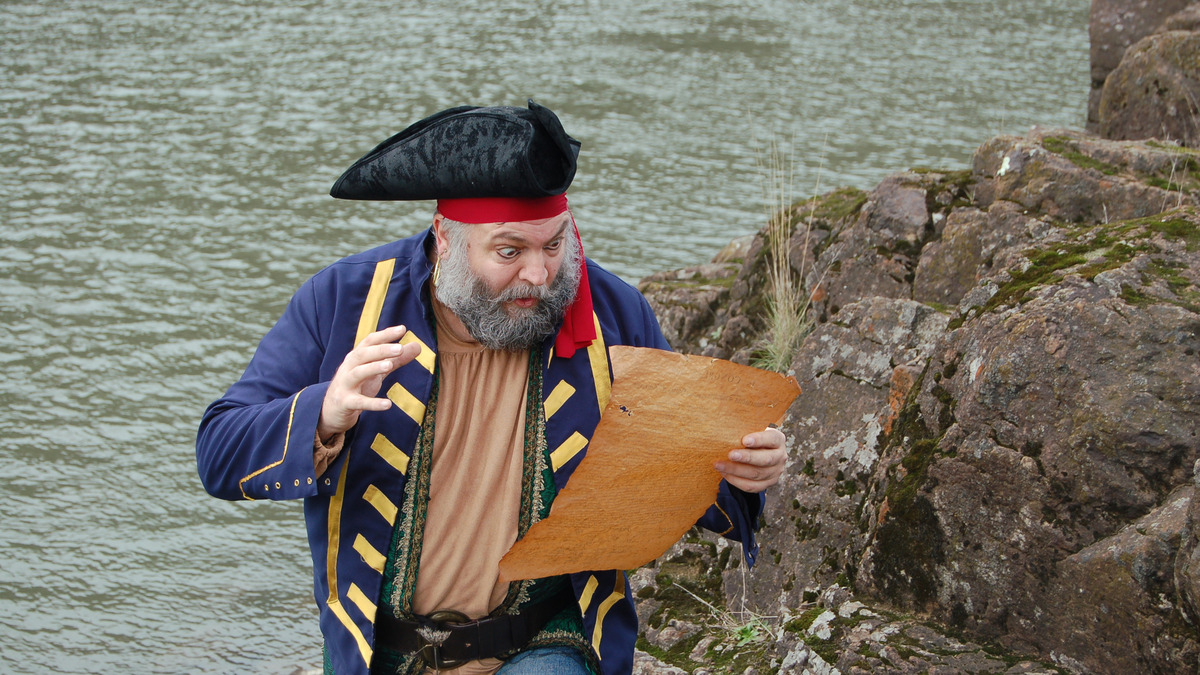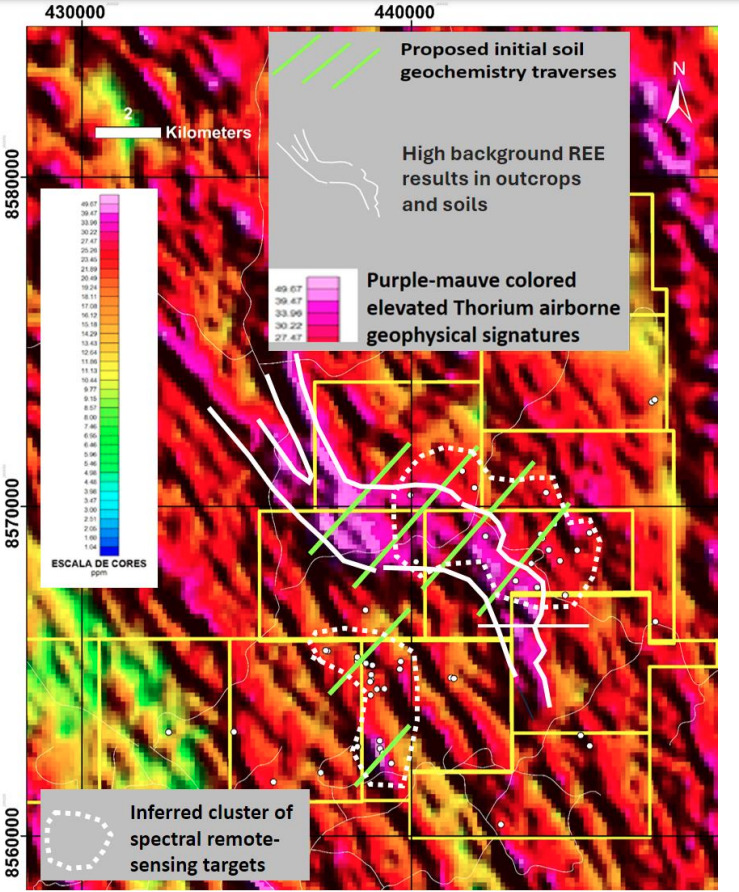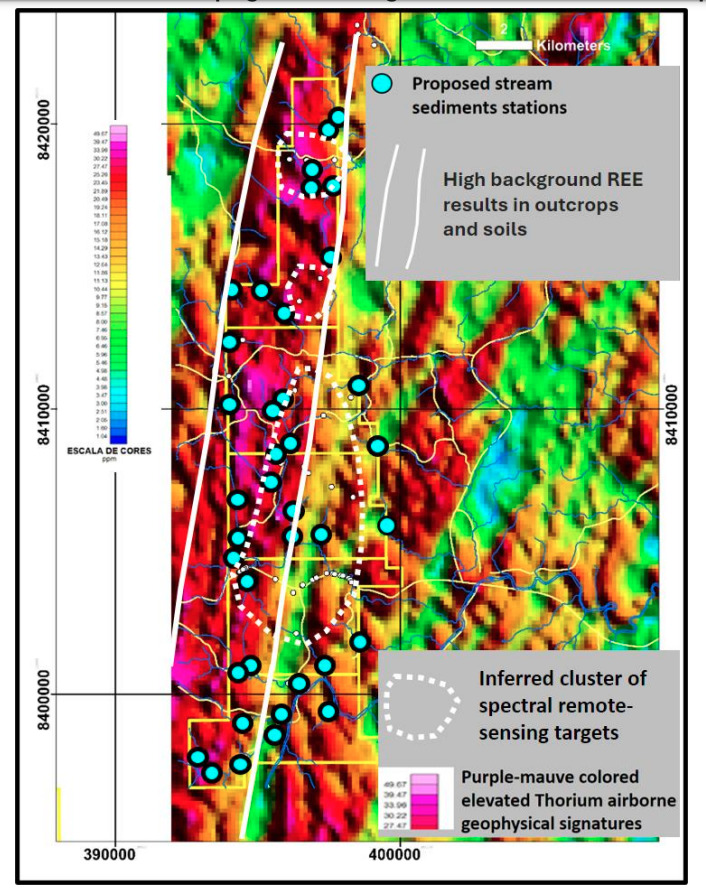Australian Mines unearths multiple REE-niobium targets in Brazil’s emerging Jequie critical minerals belt

Australian Mines’ exploration activities at the Jequie project have unearthed some precious targets in Brazil, providing a map to REE prospects. Pic via Getty Images
- Australian Mines uncovers boulder outcrops and saprolite clay systems at the Jequie project in Brazil
- The explorer has so far targeted what it views as the best 10% of its tenement for REE prospectivity
- The combined field program and remote sensing has successfully defined two high-priority areas with multiple targets for follow up
Special Report: Australian Mines has completed a full geological field reconnaissance and remote sensing program at the Jequie North and South target areas, only four months after acquiring the tenement package in Brazil.
Australian Mines’ (ASX:AUZ) Jequie project is in the highly prospective, well-endowed neighbourhood of Brazil’s Bahia state, home to several large-scale mining operations including the adjacent 510Mt Rocha de Rocha REE project.
Rocha de Rocha, partly owned by the Gina Rinehart-backed explorer Brazilian Rare Earths (ASX:BRE), holds an exploration target of 8-12bt at 1000-1500ppm total rare earth oxides (TREO) over some 1,410km2 of mining claims.
Exploration across AUZ’s ~826km2 of ground has so far unearthed the right ingredients for charnockites, leucogranites and weathered clay and saprolite profiles, leading the explorer to expand its holding further with 17 new tenements making it one of the largest landholders in the region.

Work programs at Jequie North and South
A recent geological field reconnaissance and remote sensing program has turned up more hard rock boulder outcrops and surface saprolite clay systems, successfully identifying two high-priority areas (Jequie North and Jequie South) and multiple targets for immediate follow up.
This work has been carried out on what it considers to be the best 10% of its tenement positions in terms of REE prospectivity.
The explorer is planning to follow up both areas with focused geochemical programs (stream sediments and/or soil line sampling) for the topography and regolith being evaluated.
“We have made great progress over a very short time with our disciplined and systematic approach to exploring our large tenement position in this rapidly emerging, world class REE district,” AUZ CEO Andrew Nesbitt says.
“With this approach we have been able to reduce and focus our search space into what we consider the most prospective tenements and now intend to test multiple priority targets within these areas defined by our Jequie North and South projects.”

What’s coming up?
Both projects and associated targets have been prioritised based on enhanced measured outcrop radioactivity associated with favourable host rock lithologies (leucogranites and charnockites).
These rocks are coincident with elevated airborne thorium anomalies, AUZ says.
At Jequie North, AUZ intends to carry out ~24 km of soil traverses, with individual samples dug at 50m intervals along the traverses. A total of 480 samples are to be taken.
Meanwhile, exploration at Jequie South will start with a stream sediment program consisting of 35-40 stream sediments sample.
So far, a total of 43 of the 72 licences or licences submitted for exploration status have now been granted, covering ~751km2 of a ~1,310km2 package. AUZ expects the remaining areas will be approved shortly.
This article was developed in collaboration with Australian Mines, a Stockhead advertiser at the time of publishing.
This article does not constitute financial product advice. You should consider obtaining independent advice before making any financial decisions.
Related Topics

UNLOCK INSIGHTS
Discover the untold stories of emerging ASX stocks.
Daily news and expert analysis, it's free to subscribe.
By proceeding, you confirm you understand that we handle personal information in accordance with our Privacy Policy.








